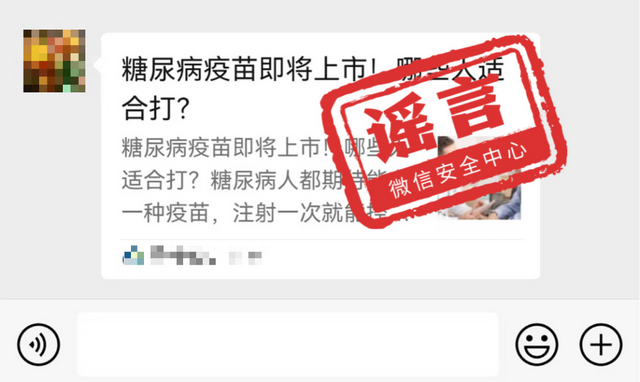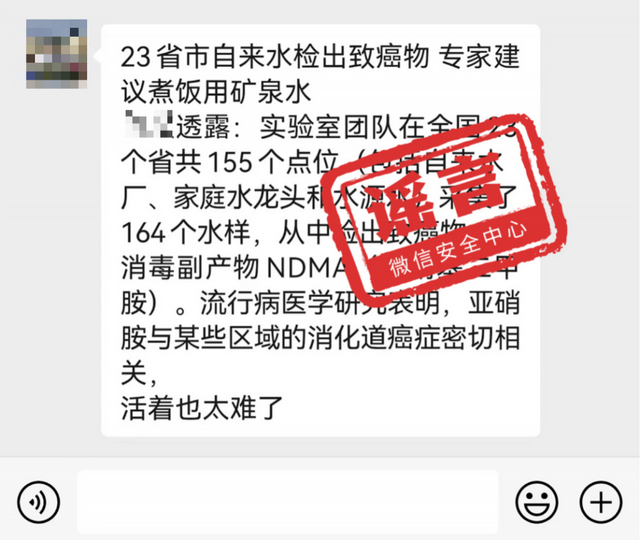Visit 36Kr’s website. letschuhai.com For more information about global business.

According to reports, before Christmas this year, the number of parcels delivered by SHEIN and Temu to American customers surged, almost equal to that of several well-known American retailers. According to the data of ShipMatrix, a package transportation consulting company, these two fast-growing shopping platforms ship about 1 million packages every day in the United States. Although this figure accounts for a small proportion of the total number of parcels shipped in the United States every day, it is growing rapidly. (WSJ)
On December 28th, the latest Google trend data revealed the hot search words that British people were most concerned about in 2023. Temu successfully made the annual hot search list in Britain. As of December 21st, statistics show that the search volume of Temu increased by 2850% compared with last year, which even exceeded ChatGPT (up by 2700%). It is understood that Temu was launched in the UK in April 2023, and now it has become the most downloaded shopping application in the UK, with an estimated 9 million users. (BBC)

According to reports, the survey report released by Morning Consult, a well-known authoritative consulting company in the United States, shows that SHEIN was selected into the list of "Top Ten Fastest Growing Brands in 2023" and "Top Ten Fastest Growing Brands among Millennials in 2023" in the United States, ranking fourth and second respectively, becoming the only China brand on the same footing as many internationally renowned brands such as ChatGPT, Zelle, OpenAI, Facebook and CocaCola. (Sina Technology)

According to reports, Byte launched an AI product called Coze overseas. It is reported that this is an application development platform for creating a new generation of AI chat bots, through which various types of chat bots can be quickly created and released to various social platforms and communication software. This product is developed by the Flow department of Byte. (Tech planet)
On December 27th, Ali International Station released the annual report of digital foreign trade, predicting the eight blue ocean tracks of digital foreign trade in 2024, with new energy vehicles, niche sports, intelligent hardware, "lazy" smart homes, green environmental protection products, green energy equipment, hardware tools and flexible production of small machinery on the list. On the same day, Roi, head of the industry and business department of Ali International Station, also combed the keywords of digital foreign trade in 2023 in the official live broadcast, and "big brand replacement", "staying at home and enjoying oneself", "green environment protection" and "black technology" became the keywords of overseas consumers throughout the year. (Ali International Station)
Alibaba International Station has been approved in principle by monetary authority of singapore recently, and will be granted a Major Payment Institution license ("MPI"). After the license comes into effect, Ali International Station can provide a series of payment services in Singapore, including account opening, local remittance, cross-border remittance and currency exchange. (Cailian)

According to reports, a statement provided by Premium Automobiles, a distributor in Singapore, said that Geely’s electric vehicle brand will begin to deliver electric vehicles to Singapore customers in the third quarter of next year. Premium Automobiles will sell extremely kryptonian 009 and X models. The agreement between Krypton and the dealer was signed in late December. (Interface News)
According to reports, BYD Mexico Branch delivered the first batch of 20 electric buses to the transportation government department of Mexico City and put them into operation. There are 55 pure electric buses in this cooperation, which is by far the largest electric bus fleet in Mexico. (BYD)
Guoxuan Hi-Tech recently announced that the company’s first battery Pack product in the United States was officially rolled off the assembly line in fremont factory on December 21st, marking the official start of the "Made in America" step of Guoxuan battery. According to reports, this is "another important action" after Guoxuan Hi-Tech announced the layout of batteries and materials in Illinois and Michigan. The factory is located in the Silicon Valley area of the United States, with a planned production capacity of 1GWh and an automation rate of 85%. It is the first Pack production line laid out by Guoxuan in the American market. The factory mainly aims at the ESS market in America, and mainly produces portable energy storage products and household energy storage products with capacities ranging from 3kWh to 30kWh. (IT house)
Jingke Energy said in a recent survey that the global demand for photovoltaic modules is expected to achieve a steady growth of 20-30% in 2024. In addition to the contributions of China, Europe and the United States, emerging markets such as the Middle East and Asia-Pacific are growing rapidly. Among them, the company’s orders in the US market are highly visible and the signing price is high. In the Middle East market, a number of GW-level N-type components have been signed, which is expected to contribute more market share and profits. (Interface News)

On December 25th, Hechuang Automobile announced that it had signed a distribution agreement with Myanmar MNEM Co., Ltd. and officially entered the Myanmar market. According to the strategic cooperation agreement, Hechuang Automobile will join hands with Myanmar MNEM Company to launch Hechuang Z03, A06, V09 and other products in Myanmar. (Beijing News)

On December 29 th, the humanoid robot company Ubisoft landed on the main board of Hong Kong and officially became the "first humanoid robot". The issue price of Ubisoft was HK$ 90.00 per share, and the closing market value of Hong Kong stocks was HK$ 37.962 billion as of the 29th. It is understood that as of December 10, 2023, Ubisoft has served more than 50 countries and regions around the world, with more than 900 corporate customers, and has sold more than 760,000 robots during the track record period (from 2020 to 2022 and the first half of 2023). (IPO knew)
Huya submitted a document to the US Securities and Exchange Commission on December 22nd, which revealed that it acquired 100% equity of a global mobile application service provider from Tencent at a total cash consideration of US$ 81 million, and the subsequent purchase price may be adjusted according to the usual practice. The reporter learned from many sources that the target is apkpure, an overseas application store under Tencent. In the early years, it was a product of a domestic Internet company, mainly engaged in overseas application store business, and was acquired by Tencent in 2021. (science and technology innovation board Daily)
It is reported that China’s "cargo Lala" will enter the Japanese market. It is understood that Lala Technology’s Japanese base recently began to recruit drivers through the social networking site Facebook, targeting drivers with "black license plates" for light trucks that have been licensed to transport other people’s goods for a fee. Registration through official website or application, online training, and submission of necessary documents such as driver’s license can get the distribution work. Lala Technology is a logistics start-up company founded in Hong Kong in 2013. Its international brand is "Lalamove", which started in Singapore in 2014 and has entered Thailand and Indonesia. Including legal persons and individuals, there are about 11 million shippers and 1 million drivers registered around the world. (Nikkei Chinese Network)
This year, five coffee chain brands have entered Singapore, among which Ruixing, which has the fastest progress, has 30 stores. Tim Hortons, Indonesian Kenangan Coffee and Fore Coffee, and Louisa Coffee in Taiwan, China all have single digits. Singapore is the first stop for Ruixing to go to sea, and Kenangan Coffee also said that it hopes to expand more countries here. The coffee market in Singapore is already quite crowded, with more than 140 stores in Starbucks, more than 70 in The Coffee Bean & Tea Leaf and 20 local brands Huggs. (Late Finance)
According to the official news of Yuanqi Forest, since January 2024, Chi Forest will officially enter Costco’s 591 stores in the United States, completing the layout of Costco in the United States. (Interface News)
Sam Altman, co-founder and CEO of OpenAI, announced the plans that OpenAI will achieve in 2024 on social platforms, including GPT-5, better voice model, video model, reasoning ability, higher rate limit and so on. In addition, it also includes better GPTs, control of arousal/behavior degree, personalization, better browsing, open source and so on. In 2024, OpenAI will also conduct in-depth research on AGI (General Artificial Intelligence). Compared with AIGC (Artificial Intelligence Generated Content), AGI is still in the research stage. (entrepreneurial state)
According to media reports, two people familiar with the matter broke the news that Anthropic, an artificial intelligence startup, predicted that by the end of 2024, its annualized revenue would exceed 850 million US dollars. According to the report, three months ago, Anthropic told some investors that the company’s income was 100 million US dollars that year, and it is expected that by the end of 2024, this figure will increase to 500 million US dollars. In just three months, Anthropic’s performance target for next year has jumped sharply, showing its strong expansion trend. (Cailian)

It is reported that in 2023, China’s automobile export volume is expected to surpass that of Japan and become the first in the world for the first time. The Japan Automobile Industry Association announced on December 28th that the export volume from January to November was 3.99 million vehicles. According to the statistics of China Automobile Industry Association, from January to November, China exported 4.412 million automobiles. Compared with the same period of last year, it increased by about 60%, and it is a foregone conclusion that the annual export volume surpassed that of Japan. (Cailian)
Zhangxin, spokesperson of the China Council for the Promotion of International Trade, introduced at the monthly regular press conference on December 27th that in November, the RCEP certificate of origin visa amount of the national trade promotion system was 568 million US dollars. The number of visas was 19,834, a year-on-year increase of 20.83%. There were 3,434 certification enterprises, a year-on-year increase of 12.41%. The export destination countries include Japan, South Korea, Indonesia, Thailand and other 11 member countries. It is estimated that a total of US$ 09 million will be reduced or exempted for Chinese products in RCEP importing member countries, and the trade dividends brought by RCEP will be released continuously. (Securities Times)
"Since the fermentation of the Red Sea incident, the consultation volume of China-Europe trains has increased by 40%." Recently, malei, the chairman of Xinjiang Zhonggu Yuyu International Trading Co., Ltd., who has been engaged in China-Europe train business for a long time, said. For a long time, due to cost reasons, foreign trade enterprises prefer to choose shipping. However, due to the current situation in the Red Sea, the freight rate of Asia-Europe routes has soared, and more enterprises have begun to consider China-Europe train transportation. (SSE)
Cui Dongshu, Secretary-General of the Passenger Transport Association, issued a document saying that from January to November, 940,000 new energy passenger cars were exported, up 75% year-on-year. From the retail data monitoring of overseas markets with independent exports, independent brands such as SAIC have performed strongly in Europe. In addition to the brilliant performance of traditional export car companies, the export of new forces has gradually started recently, and data in overseas markets have begun to appear. In the next few months, the export of new energy vehicles is expected to maintain a high growth throughout the year. (Securities Times)
Affected by rising prices, Korean consumers spent less on cosmetics this year. Compared with high-end cosmetics, consumers prefer to buy low-priced cosmetics with high cost performance. It is worth mentioning that China’s cosmetics exports to South Korea increased significantly year-on-year. Data show that in the first eight months of this year, China’s cosmetics exports to South Korea increased by about 190% year-on-year. China’s own advantages of cosmetics and China’s cross-border e-commerce platform, which has recently become popular in South Korea, will also be favorable factors for China’s cosmetics to enter the Korean market. (CCTV Finance)
Huatai Securities Research Report believes that short plays going to sea has become an inevitable choice for the industry: 1) domestic supervision is gradually normalized, policies encourage high-quality short plays to go to sea, and multi-platforms actively respond to policy requirements; 2) The domestic miniseries market is highly competitive. First, the number of online micro-short plays and the number of new ones continue to increase; Second, the homogenization of subject matter and content intensifies industry competition; Third, the cost of domestic short plays is on the rise; 3) The overseas market is vast. On the one hand, European and American users have high willingness to pay, on the other hand, overseas audiences have diverse preferences, and producers have more creative space; 4) Web-text going out to sea lays a user foundation for short plays going out to sea, and web-text manufacturers have content advantages. (36Kr)
This round of financing investors include Hefei Baohe Pilot Venture Capital Fund, Goodman Group, the largest industrial real estate group in Australia, Zo Future Group, a listed company in Hong Kong, and Han Wen, founder of Weidu Technology. The financing funds will be used to further accelerate the mass production delivery of its new energy intelligent driving heavy trucks and the certification and testing of American and European products. Up to now, Weidu Technology has completed four rounds of billion-dollar financing. It is reported that Weidu Technology, established in March 2022, is a start-up manufacturer of new energy self-driving heavy trucks, aiming at creating new self-driving new energy heavy trucks. (36Kr)
This round of financing is led by Dachen Caizhi, followed by Su Venture Capital, Guofa Venture Capital, Su Gaoxin and Medpark. The financing funds will help the company deepen the platform and international layout of vascular intervention, enrich the product pipeline, expand the production base and attract outstanding talents. It is reported that Causel Medical, established in November 2013, is a platform enterprise with all-round production and R&D capabilities of vascular interventional instruments, and is committed to providing systematic solutions for clinic. Causel Medical actively promoted the globalization strategy and acquired Micell Company at the end of 2021. (36Kr)
This round of financing is exclusively invested by Kunzhong Capital, and the financing funds will be used for R&D, manufacturing and commercialization. Founded in May, 2022, Fengtan Robot focuses on the R&D, production and sales of construction robots. Its main product is indoor spraying robot with putty and latex paint. Overseas, Fontaine Robot is currently mainly oriented to the Singapore market. In view of the narrow space and internal design of local standardized houses, we develop smaller, multi-angle spraying and flexible matching robot products. (36Kr)
This round of financing was led by Soor Capital and Yida Capital. This round of funds will be used to increase ShopRaha’s local performance center in Kuwait and build a new business line team. Raha was founded in Kuwait, mainly providing automation solutions for many industries. ShopRaha, the company’s first verification project, is an e-commerce platform for fresh department stores serving the Kuwaiti market. Through the establishment of a fully automatic and data-driven internal logistics system, ShopRaha has the first fully automatic robot performance center in Kuwait. At the beginning of next year, the company’s senior management team plans to open a trip to China, visit several robot and automation solution companies that are interested in expanding the Middle East and North Africa market, and sign a formal cooperation agreement with a company that has signed an agreement on cooperation intention. (36Kr)
This round of financing is led by innovation works and followed by Gongqingcheng Qixi Investment. The financing funds are mainly used for product research and development, market expansion and team size expansion. It is reported that AutoAgents.ai is an artificial intelligence technology company, which was established in June 2023, and is committed to providing AI Agents and Copilot software services for enterprises in many countries and regions around the world to improve people’s work efficiency. At present, the company has also reached in-depth cooperation with Tencent Cloud, Alibaba Cloud, Innocent and other institutions to explore the application of large-scale models. (36Kr)
On January 11th, 2024, Feishu Shennuo will join hands with 36Kr to hold the "Insight Trends and Sharp Future-2023 Meet Brands China Emerging Consumer Brand List Release Ceremony" in Shenzhen to officially announce the top 50 list. This event gives priority to open recruitment for cross-border brands. Welcome to sign up.

At present, 36Kr overseas study and exchange group has attracted more than 13,000 overseas students from domestic and foreign start-ups, industry giants and investment institutions. In the sea community, we select and sort out daily global cross-border information for group members to help sea people grasp the latest trends; Organize regular exchange activities at sea, link the sea ecosystem and find potential partners! Welcome to join WeChat (ID: wow36krchuhai-xzs2), 36Kr’s assistant at sea, to apply for joining the group and go to sea together!








































